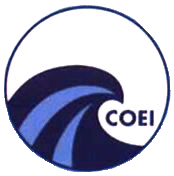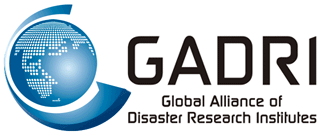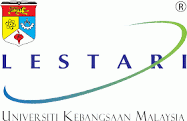- Home
- About
- Events
- Members
- About Members
- Member Institutes
- Algeria
- Argentina
- Australia
- Austria
- Bangladesh
- Brazil
- Bulgaria
- Canada
- China, People's Republic of
- Colombia
- Ecuador
- Egypt
- European Commission
- France
- Germany
- Ghana
- Hong Kong (People's Republic of China)
- India
- Indonesia
- Iran (Islamic Republic of)
- Israel
- Italy
- Japan
- Korea, Republic of
- Lao PDR
- Malaysia
- Mexico
- Morocco
- Nepal
- New Zealand
- Oman
- Phillippines
- Slovakia
- South Africa
- Sri Lanka
- Sudan
- Sweden
- Switzerland
- Chinese Taipei
- Thailand
- Turkey
- United Kingdom
- United States
- Vietnam
- Zimbabwe
- Membership
- Activities
- Resources
- GADRI Archives
- Home
- >
- Members
- >
- Member Institutes
- >
- Malaysia
|
|
Institute for Environment and Development (LESTARI), Southeast Asia Disaster Prevention Research Initiative (SEADPRE-UKM, University of KebangsaanBangi |
| Outline The Institute for Environment and Development (LESTARI) was established on 1st October 1994 as a multidisciplinary institute within the structure of Universiti Kebangsaan Malaysia. It fulfills the aspirations of the university, as envisioned by the United Nations Conference on Environment and Development (UNCED) held in Rio de Janeiro, Brazil, to realise the goal of sustainable development through research and capacity development. LESTARI was also established to serve as a reference centre capable of dealing with environment and development issues, assisting government in formulating policies based on research of a holistic and balanced kind. The development function is directed towards enhancing human resource capacity through skill development and training, for both government and private sectors. Mission
Vision Leader in innovative research and knowledge sharing on holistic disaster prevention
|
|
 |
Universiti Kebangsaan MalaysiaBangi |
| Outline The idea for an institution of higher learning for the Malays was first mooted at the 1903 Rulers' Conference, or Durbar. The Malay intellectual Za'ba, wrote about such a need in the newsletter Lembaga Melayu in 1917. A movement, and subsequent debates, among Malay intellectuals, for the setting up a university using the Malay language as the medium of instruction in the institution of higher learning was formed in 1923 when another Malay thinker Abdul Kadir Adabi, submitted a memorandum on the matter to the HRH the Sultan of Kelantan. However the effort came to nothing due to many obstacles and resistance from the colonial authorities. [detail] --> |
|
 |
Universiti Sains Malaysia (USM))Penang |
| Outline Established as the second university in the country in 1969, Universiti Sains Malaysia (USM) was first known as Universiti Pulau Pinang. In 1971, USM moved from its temporary premises at the Malayan Teachers' Training College, Bukit Gelugor to the present 416.6 hectare site at Minden, approximately 9.7 km from Georgetown. USM offers courses ranging from Natural Sciences, Applied Sciences, Medical and Health Sciences, Pharmaceutical Sciences to Building Science and Technology, Social Sciences, Humanities, and Education. These are available at undergraduate and postgraduate levels to approximately 30,000 students at its 17 Academic Schools on the main campus in the island of Penang; 6 Schools at the Engineering Campus in Nibong Tebal (approximately 50km from the main campus); and 3 at the Health Campus in Kubang Kerian, Kelantan (approximately 300km from the main campus). Vision "Transforming Higher Education for a Sustainable Tomorrow" Mission USM is a pioneering, transdisciplinary research intensive university that empowers future talents and enables the bottom billions to transform their socio-economic well-being. [detail] --> |
|
 |
Universiti Tenaga National (UNITEN)Kajang |
| Outline Universiti Tenaga Nasional (UNITEN) is a unique institution, providing academic programmes within our two campuses, Putrajaya Campus and Muadzam Shah Campus. Our programmes are focused on Engineering, Information Technology, Business Management and related areas. UNITEN not only prepare its graduates to become knowledgeable and competent professionals, but also to develop them as well-rounded individuals with broad intellectual outlook. Vision A leading global energy university that shapes a sustainable future Mission We strive to advance knowledge and learning experience through research and innovation that will best serve human society [detail] --> |
|
 |
Centre for Coastal and Ocean Engineering (COEI)
|
| Outline COEI was formally known as the Coastal and Offshore Engineering Institute. The rebranding of COEI was formalized by Universiti Teknologi Malaysia (UTM) in 2015 under a university wide restructuring of research centers and faculties. COEI was first established in 1990 as a pioneer R&D research centre in Malaysia that specialize in coastal and offshore engineering. It is one of the five research centres (RC) that forms the Research Institute for Sustainable Environment (RISE) in UTM. As a member of RISE, COEI works very closely with other member RCs whose niche areas are all related to sustainable environment and sustainable processes. COEI has developed a few innovative products related to coastal erosion protection and engineered reef system such as the Sine Slab, Hydrocheese, Stepfloat and Artgrass. Many of these products has been in employed throughout the country either as prototype application or field test systems. COEI has wide experience in hydraulic studies and hydrodynamic simulation of coastal processes with over 60 consultancy works on record and over 20 research projects. Clients include port authorities and port operators, the Marine Department, PETRONAS Carigali, Drainage and Irrigation Dept, private developers and other engineering consultants needing specialized services in coastal engineering. Our present interest now are on climate change effects, primarily sea level rise, extreme coastal storms, coastal floods and tsunamis. We were responsible for completing the first tsunami modelling study for Malaysia, after the catastrophic 2004 Indian Ocean tsunami event and pioneer application of the coastal vulnerability index (CVI) in Malaysia as a means to classify and assess coastlines risks to sea level rise that would help future planning and strategy. Another research area that COEI embark on are mangrove adaptation to sea level rise and marine eco-system regeneration.[detail] --> |
|
 |
Centre for Environmental Sustainability and Water Security (IPASA), Research Institute for Systainable Environment
|
| Outline The Centre for Environmental Sustainability and Water Security (IPASA) was founded in 1994, formerly known as the Institute of Environmental and Water Resource Management. IPASA is one of the research centres that has been established under the umbrella of Research Institute for Sustainable Environment (RISE). It is an interdisciplinary centre, which integrates expertise in various fields at UTM to work with problems related to environment. The Centre undertakes both basic and applied research in providing practical and sustainable solutions in environmental related areas. The current research areas include flood mitigation, flood modelling, climate change impact, green technology, life cycle assessment (LCA), carbon and water footprints, water and wastewater treatment technology, integrated water resources management, urban runoff management, waste recovery and water reuse. These researches are funded by public and private agencies and some are carried out in collaboration with researchers from other countries such as Japan, Sweden, Denmark, United Kingdom, Indonesia, and Cambodia. [detail] --> |
|
 |
Malaysia Japan International Institute of Technology (MJIIT)
|
| Outline The idea to initiate the Japanese-type education in Malaysia was borne and agreed by both Malaysia and Japan during the course of ASEAN + 3 Summit Bandar Seri Begawan, Brunei Darussalam by the then prime ministers Tun Dr. Mahathir Mohammad and Junichiro Koizumi respectively. The idea was further deliberated through a series of meetings and discussions by both government officials. Both parties agreed to a technology-based university. [detail] --> |
|
 |
Disaster Management Institute (DMI)
|
| Outline Disaster Management Institute (DMI) was established in August 2016 as one of the School Center of Excellence (SCoE) institutes to spearhead the disaster management research capability of the school and to collaborate with related agencies and universities that have common interest in disaster management research areas. Disaster Management Institute focuses its research mainly on three important phases in the disaster management cycles; the pre disaster phase (preparedness,mitigation and early warning), during disaster phase (response such as evacuation, control room and others) and post disaster phase (recovery, rehabilitation, reconstruction and development, risk on damaging properties and others). The institute concentrates on high impact disaster management research by aligning to the university's niche areas through collaborating with related private companies, government agencies, local and international universities. Since the expertise of DMI is providing education by creating awareness and disaster resilience, another niche area for the institute is to educate communities, which include public including business communities, school, non-profit organization and other interested parties. Hence, for developing the capacity building in the disaster management field, the institute would invite any interested parties to co organize conference, training, executive courses and also other academia activities related to managing disaster. [detail] --> |
|



